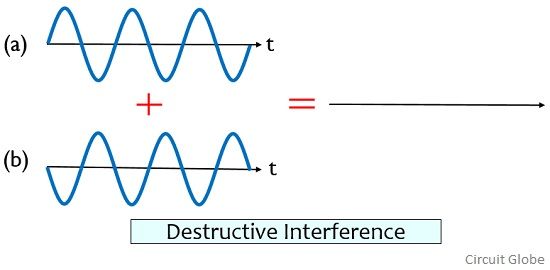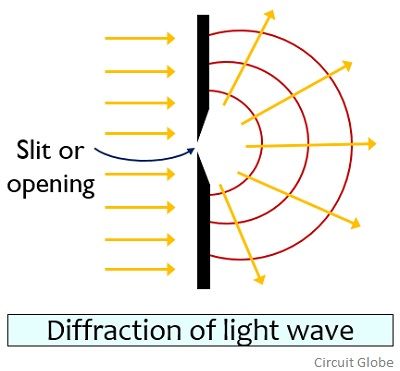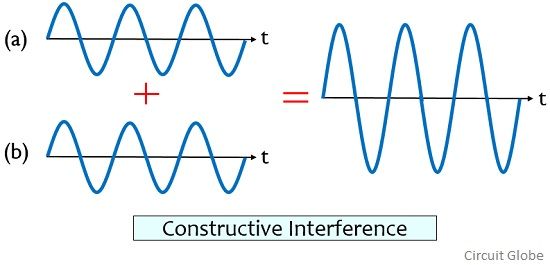The crucial difference between diffraction and interference is that diffraction of light occurs due to the superposition of secondary wavelets that generates from various parts of a wavefront (simply put spreading of light when the beam passes through the slit). As against interference is the result of the superposition of light waves from 2 coherent sources.
Another important difference between the two is that the intensity of all the bright fringes is not the same in the case of diffraction however it is same in case of interference. In this session, we will discuss some other parameters that distinguish the two.
Content: Diffraction Vs Interference
Comparison Chart
| Basis for Comparison | Diffraction | Interference |
|---|---|---|
| Basic | Occurs due to superposition of secondary wavelets. | Occurs due to superposition of light waves from two sources. |
| Fringe Intensity | Not same for all the fringes. | Same for all the fringes. |
| Width of fringes | Unequal | Equal |
| Fringe spacing | Non-uniform | Uniform |
| Slit or obstacle | Required | Not required |
| Direction of wave propagation | Gets changed after being diffracted. | Remains unchanged after getting superposed. |
| Contrast between maxima and minima | Poor | Good |
Definition of Diffraction
Diffraction is the phenomenon of spreading of the light wave when it passes through a slit or any small gap.
But it is noteworthy here that the wavelength of the wave must be comparable with the dimensions of the slit.
As in the case of the large opening, the light wave will not bend at the edges. While in case of smaller opening the bending is quite noticeable. But for the very small dimension of the slit, the opening acts as a separate source and thus allows the spreading of the wave over the entire surface after the slit.
The figure below shows the process of diffraction of lightwave:
The figure below shows the pattern for wave diffraction:
The maxima in the pattern represent the bright region while the minima show the dark region over the screen.
Definition of Interference
Interference is the act of superposition of two or more light waves emitted by two coherent sources travelling in the same medium. We know coherent sources provide a light wave of the same frequency and constant phase difference.
So, two waves that are coherent in nature superpose each other when they cross each other. Thus the superposition of the waves gives algebraic addition of the disturbances due to separate waves.
It is to be noted here that the intensity of the resultant wave relies on the amplitude and phase relation of the two-component waves.
So, on the basis of this, interference is classified into two categories:
1. Constructive Interference: When the two superposing waves are of the same amplitude and phase then the intensity of the resultant wave will be higher than the two separate waves.
More specifically the amplitude of the resultant wave will be twice the amplitude of the waves that re going to be superposed.
Such interference is called constructive interference. The figure below shows constructive interference of waves:
2. Destructive Interference: If the two superposing waves have the same amplitude but are of opposite phase then the intensity of the resultant wave will be lesser than the two separate waves. The amplitude of the two waves will be added but as the two are in opposite phase thus the two cancels each other.
This is called destructive interference. The figure below represents destructive interference:

Key Differences Between Diffraction and Interference
- Diffraction is the result of light propagation from distinct part of the same wavefront. While interference is the result of the interaction of light coming from two separate wavefronts.
- The width of the fringes in case of diffraction is not equal while the fringe width in case of interference is equal.
- Diffraction possesses poor contrast between maxima and minima while interference exhibits good contrast between maxima and minima.
- For diffraction to take place slit or obstacle is necessarily required but for wave interference there exists no such requirement.
- Due to diffraction, the direction of propagation of wave gets changed. Whereas in case of interference the superposed wave travels in the same direction.
- In diffraction the spacing between different fringes is non-uniform. However, in the case of interference, the spacing between the fringes exhibits uniform nature.
- The minimum intensity points in the case of diffraction are not completely dark. As against in case of interference, the points of minimum intensity shows complete darkness.
Conclusion
So, from the above discussion, it is clear that interference is the outcome of superposition while diffraction is the consequence of spreading of the light wave.



